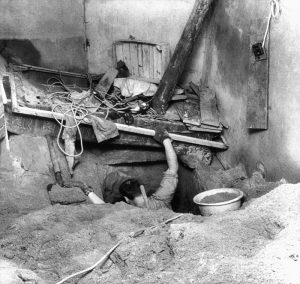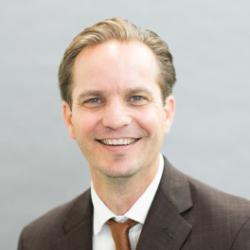Without warning, in the middle of a pleasantly warm August 13 night in 1961, German Democratic Republic authorities hatched and executed their stealthy plan: 10,000 soldiers were ordered to race to secure the border between East and West Berlin by early dawn. As the sun rose, the 1.5 million or so on the east side of the city were trapped for the next 28 years.
In a few hours, thousands of tons of wood and concrete posts were erected and strung with several kilometers of barbed wire. Because of random wanderings and late night adventures, a few thousand East and West Berliners – for better or worse – suddenly found themselves on the wrong side of the fence.
Several months thereafter, the temporary barbed wire and post barrier began to be replaced by a several-meter high concrete wall, sectored with watch towers and armed guards 24/7 ready to shoot and kill any defectors to freedom.
The East Berlin Wall became the living symbol of the so-called “Iron Curtain” that separated command and control economies of the Soviet Union and its communist allies in the East from the free and enterprising capitalist economies of the West.
Before this artificial cultural, economic and political barrier existed between August 13, 1961 and November 9, 1989, about 1/6th of the East German population had already illegally defected. Some estimates state that around 3.5 million GDR citizens found ways to trump strict travel and emigration restrictions while fleeing to several destinations in West Germany and the rest of Europe.
The desperate initial attempts to escape, after the border was first secured, were quite rudimentary and mostly unsuccessful. Many ended up jumping out of windows of buildings erected along the wall, swimming icy canals and the Spree River, or simply cutting through or hopping over patches of barbed wire where the pre-fabricated slabs of concrete had not yet been erected.
But as the 3.6 meter (11.8 feet) Berlin Wall was completed and become virtually impenetrable, extraordinary creativity and determination was necessary to arrive on the other side.
It is not known with precision how many escaped to the West, due to the clandestine nature of such ventures and the air-tight protection of their personal identities from Stasi intelligence. Many actually acquired new papers and passports with aliases for this very reason.
However, what is known is that all those who heroically “beat the Wall” were creative and gutsy characters. Their souls were filled with daring, cunning, and ingenious creativity. They embodied the very enterprising spirit – unternehmergeist – typical of entrepreneurial market-based societies in the West.

Among the more creative and successful East German “escape artists” were:
– a fiancé who rented a convertible sports car, removed its windshield and let most of the air out the tires, then sped full-metal-to-the-pedal with his East German lady “a la James Bond” and future mother-in-law while all three ducked their heads under the lowered metal bar of Checkpoint Charlie;
– an engineer who stole a train, loaded his family, disabled the emergency brakes and drove full-steam over the border along abandoned freight tracks while sending the border patrol scattering like cats;
– a man who stole a tank attempting to crash through the wall, calling others to “hop on a ride to freedom”; while only denting the reinforced concrete wall, he then climbed over the wall, got shot twice, survived and regained consciousness by drinking his favorite brand of hard liquor in the bar across the border;
– two brothers who learned to fly and build replicas of ultralight Russian aircraft while cleverly painting Soviet red stars on their wings, thus completely avoided any counteract by border guards.
– the hundreds of persons who pickaxed away to create 70 tunnels and “miraculously” evaded detection by Stasi bugs and acoustic technologies with their make-shift muffling systems.
Of all the imaginative attempts, the one that touched me the most when researching this article was that of circus performer, Horst Klein. One day, frustrated since he could no longer live out his artistic calling, Klein dipped into his giftbag of God-given talents to “tightrope walk” along a wobbly disconnected electrical power line over the wall to freedom. As the Huffpost retells his daring escape:
Trapeze artist Horst Klein was banned from performing in East Germany because of his anti-communist beliefs. So, he used his tightrope skills to flee to West Berlin. ‘I couldn’t live any longer without the smell of the circus in my nostrils,’ Klein told newspapers at the time. In December 1962, Klein scaled an electricity pole near the Berlin Wall and, dangling high above the guard patrols, inched his way across a disused power cable. His hands numb from cold, he fell from the rope and broke both of his arms, but he had landed inside West
Berlin.
Klein, after receiving several letters from his spouse still in the East demanding he leave the circus and reunite, braved an attempt to sneak back over the wall and carry her back to freedom. Sadly, he was immediately captured and arrested. Klein was then sentenced to 30 months of hard labor by GDR courts and was later divorced by his wife. Little is known what happened to him after this.

